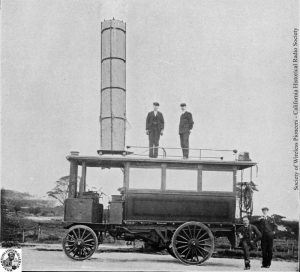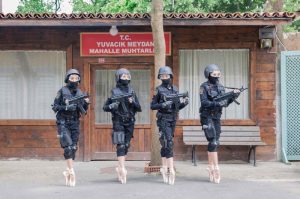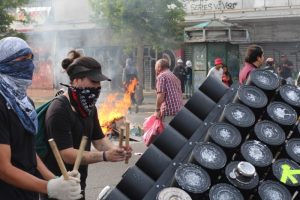Urban Interventions – Personal Projects in Public Spaces, edited by Robert Klanten and Matthias Huebner (available on Amazon UK and USA.)
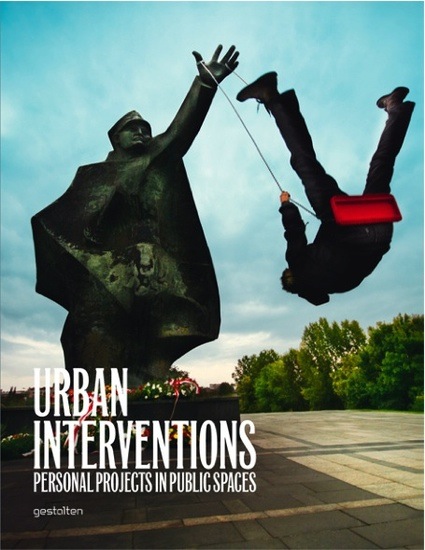
Publisher Gestalten says: This book is a striking collection of the personal, often playful and thought-provoking installations in urban environments that use and react to walls, traffic signs, trees, ads, and any and all elements of the modern city. It is the first book to document these very current art projects – as well as their interplay with fine art, architecture, performance, installation, activism and urbanism – in a comprehensive way. This perceptive work brings art to the masses and helps us to rediscover our every day surroundings. It challenges us to question if the cities we have are the cities we need while adding a touch of magic to mundane places and situations.
(…)
The book shows the growing connections and interplay of this scene with art, architecture, performance, and installation. Propagators of urban intervention surprise and provoke with work in cities including New York and London, but also in countries such as China, Columbia, and Turkey. Everywhere the work appears it turns public spaces into individual experiences.
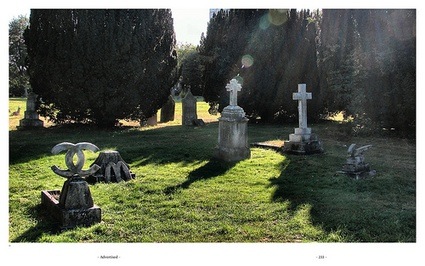 View inside the book
View inside the book
Urban Interventions might be surprising, fun and delightful but it does not stop at the anecdotal and amusing. The book puts urban creative experiments into the wider and rather distressing context of worldwide urbanization. As it’s been repeated again and again, 30 years ago, 4 out of every 10 people were living in cities. Since 2008, more than half of the world’s population lives in towns and cities. By 2050 seven out of 10 people will be city-dwellers. Fortunately, artists, designers and activists are bringing cities back to a more human scale by adopting an anti-authoritarian approach and using the city as their playground and canvas. Their subversive, humorous approach reminds us that the city shouldn’t be left solely into the hands of leaders, urban policymakers and architects.
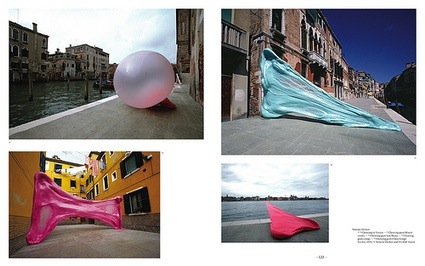 View inside the book
View inside the book
Curator, writer and artist Lukas Feiress wrote one of the introductory texts for the book. In the other essay, Alain Bieber reminds us of how much these artists owe -knowingly or not- the European avant-garde movements and concepts. The situationists of course but also Fluxus, the Dadaists and found art. Bieber happens to write one my favourite art blogs, rebel:art. Yes, it’s in german. I don’t understand half of it either but the photos and the links remain priceless.
The book presents 200 works. You’ll find works by The Yes Men, Hehe and Mark Jenkins along with interventions by many street artists, activists and performers you might never have heard of. Some are thought-provoking, others are simply charming. Many are both. I had a hard time selecting the ones to highlight in this post but do i like my job when it gets so challenging. I’ll follow the chapters of the book:
The first theme explored is Urban Canvas which defines the artistic interventions that transform and subvert any of the existing structures, settings and visual codes that define the urban territory.
In Cercle et suite d’éclats, Felice Varini has painted perfect circles over the facades of over 70 houses in Vercorin, Switzerland. The optical illusion appears when one looks at the village from a nearby and precise vantage point.

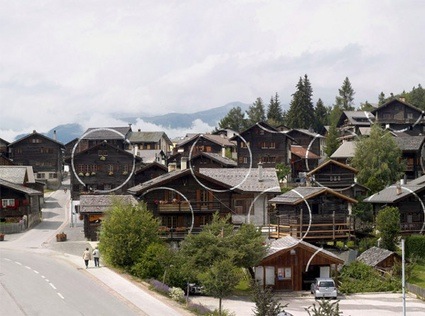
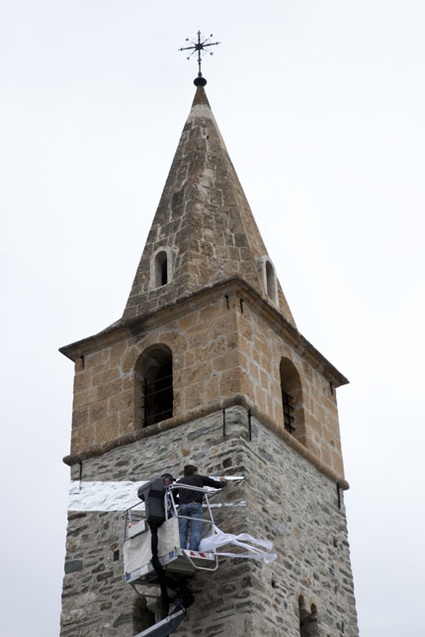 Felice Varini, Cercle et suite d’éclats
Felice Varini, Cercle et suite d’éclats
Three ellipses for three locks at Cardiff Bay Barrage:
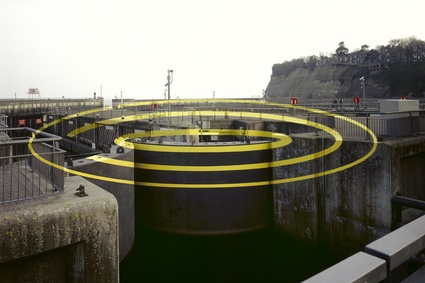 Felice Varini, Three ellipses for three locks
Felice Varini, Three ellipses for three locks
Community-driven art interventions in Vila Cruzeiro, a favela in Rio, Brazil:
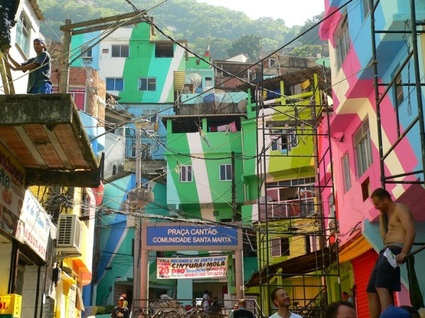
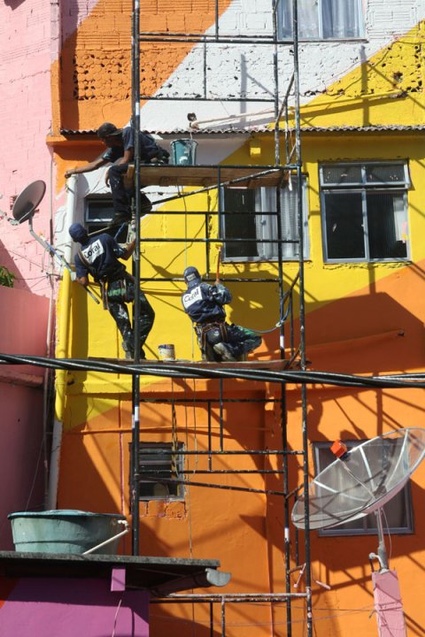
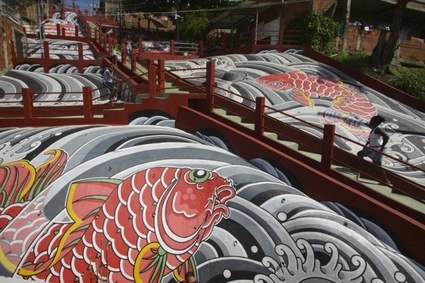 Haas&Hahn, Favela Painting, Rio de Janeiro, 2006
Haas&Hahn, Favela Painting, Rio de Janeiro, 2006
The second chapter, Localized, presents a selection of works that closely reflect and comment the spaces with which they are engaging.
Photographer Frédéric Lebain took pictures at various locations throughout New York city and printed the images in large poster format. A few days later, he went back to that exact same location to capture a larger framed shot in which he superposed the poster of his first visit to the area.
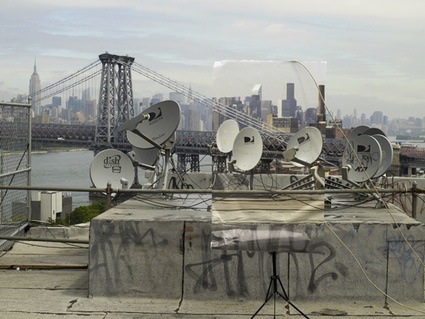
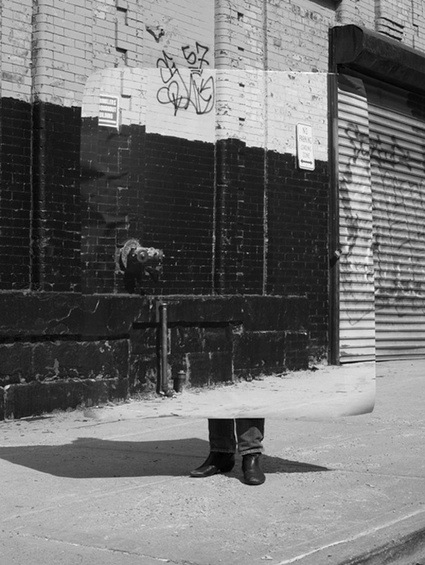 Fred Lebain, New York Wallpaper, New York, 1009
Fred Lebain, New York Wallpaper, New York, 1009
Third chapter, Attachments, showcases parasitic adds-on and extensions to the cityscape.
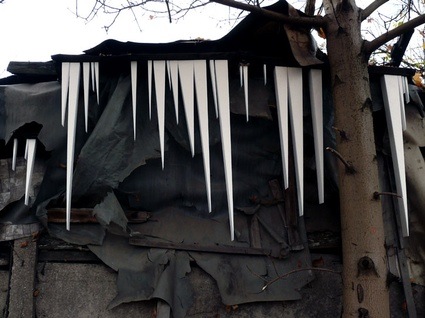
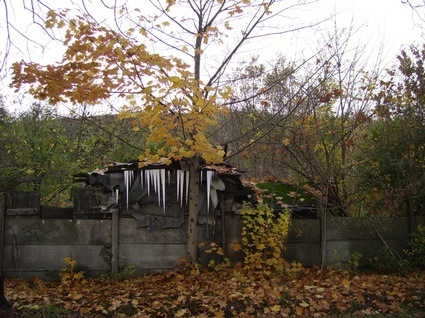 Krystian Truth Czaplicki, Wroclaw, Poland, 2008
Krystian Truth Czaplicki, Wroclaw, Poland, 2008
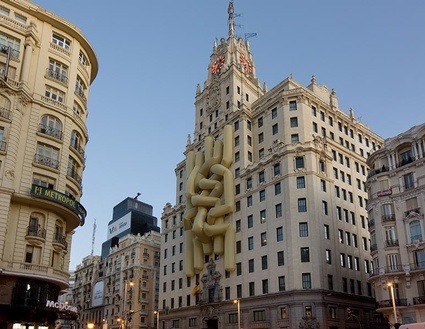 L/B, Comfort 6, La noche en blanco, Madrid, 2008
L/B, Comfort 6, La noche en blanco, Madrid, 2008
The artists presented in the fourth chapter of the book, Public Privacy, attempt to customize the city to their own needs in order to blur the line between the public and the private sphere.
Matthias Wermke & Mischa Leinkauf‘s video Zwischenzeit document their exploration of the inner workings of the Berlin subway system on a homemade, collapsible and portable draisine that they drive through the Berlin U-bahn at night.
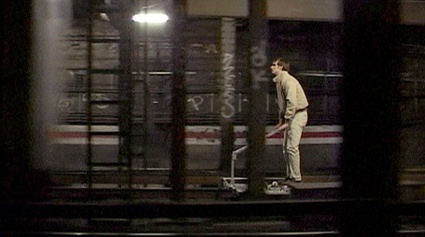
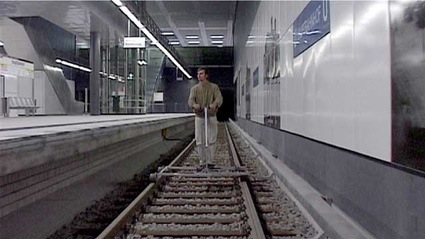 Matthias Wermke & Mischa Leinkauf, In-Between (video still), 2007/2008
Matthias Wermke & Mischa Leinkauf, In-Between (video still), 2007/2008
Located on a Berlin waste land turned into a sculpture park, Etienne Boulanger built a one room 2 star hotel between billboards. Euro 20 for a night costs, closed in 2008.
Etienne Boulanger, The Single Room Hotel, 2007-2008
Chapter 5, Activated, is even more scenical, performative, interactive and theatrical.The response of the audience takes center stage.
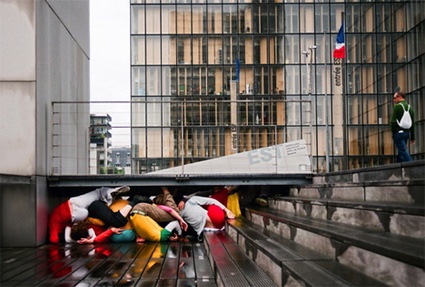 Compagnie Willi Dorner, Bodies in Urban Spaces
Compagnie Willi Dorner, Bodies in Urban Spaces
Kamila Szejnoch‘s simple swing gives a new life and meaning to the bronze ‘Berling Army Soldier’ in Warsaw, a memorial erected for communist propaganda.
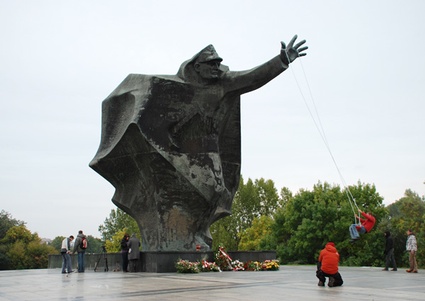 Kamila Szejnoch, Swing, Warsaw, 2008
Kamila Szejnoch, Swing, Warsaw, 2008
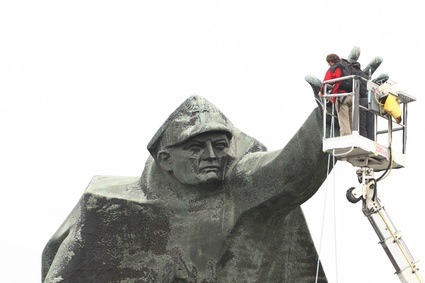 Kamila Szejnoch, Swing, Warsaw, 2008 (installation)
Kamila Szejnoch, Swing, Warsaw, 2008 (installation)
Valentin Beinroth and Florian Jenett left some 50 replicas of handguns in the streets of Frankfurt, Germany. The guns were made from tinted frozen water, making them look real on first sight. The performance was stopped by the police.
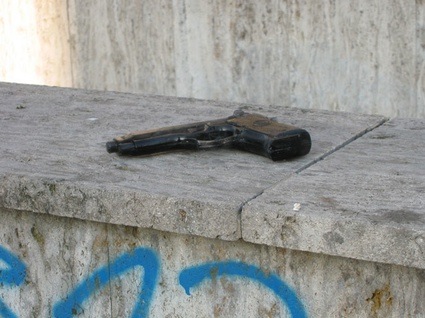
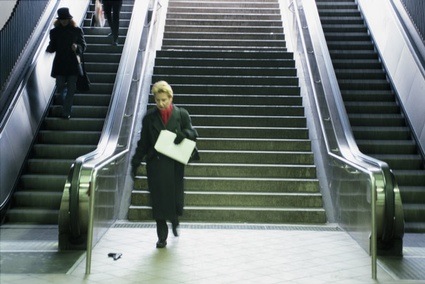 Photo: Betty Pabst
Photo: Betty Pabst
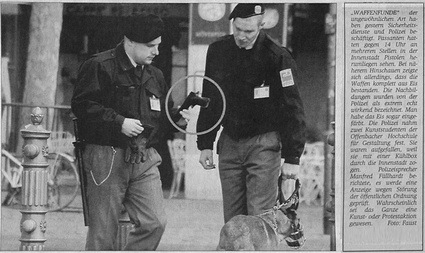 Valentin Beinroth and Florian Jenett, Freeze, Frankfurt
Valentin Beinroth and Florian Jenett, Freeze, Frankfurt
Chapter 6, Advertised, is all about billboards and other forms of urban advertising. Most are highly critical, some of these actions and subversions however were actually orchestrated by advertisers themselves.
Battle of…Stars look like everyone: Mr Talion vs Epoxy. Rules: time, 2 hours; subject, “stars look like everyone”; insert a super star in a mainstream store on Alexanderplatz in Berlin.
Spot Herr de Niro among the staff mugshots (also available in Brad Pitt version):
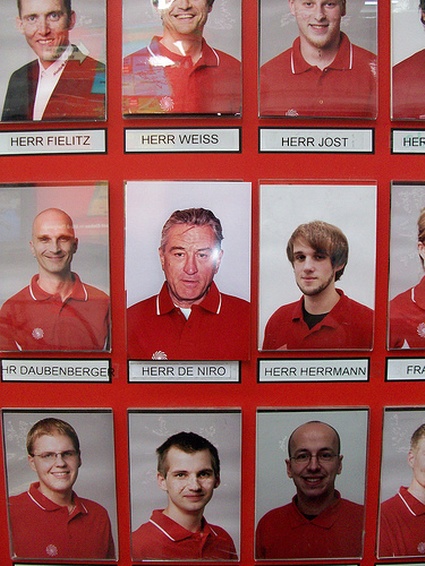
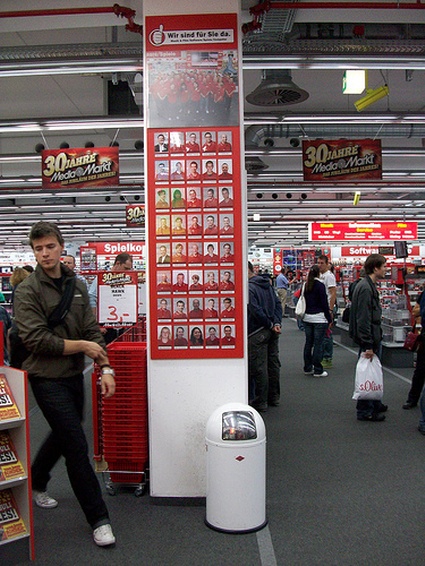 Mr Talion vs Epoxy, Battle of…Stars look like everyone, at Mediamarkt, Alexander Platz, Berlin
Mr Talion vs Epoxy, Battle of…Stars look like everyone, at Mediamarkt, Alexander Platz, Berlin
Toronto street artist Posterchild made my day when he gave those bronze lions fastfood fries and soft drinks to snack on.
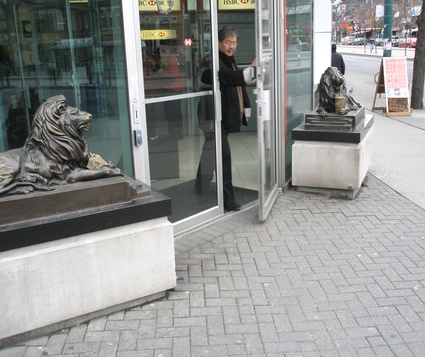
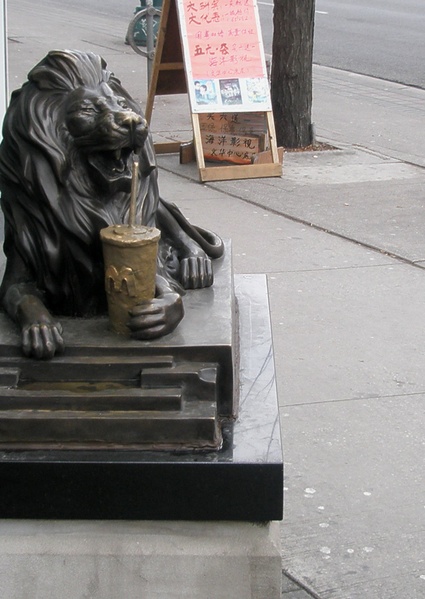 Posterchild, Coke n’ Fries, Toronto, 2008
Posterchild, Coke n’ Fries, Toronto, 2008
Finally Natural Ways tries to bring nature on city’s public square and back alleys.
Neozoon, the kings of furcoat recycling.
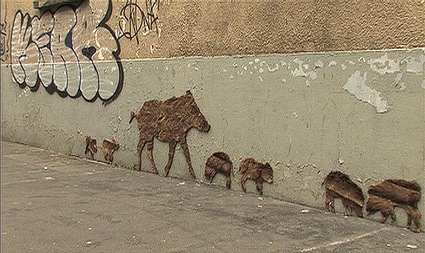 Neozoon, Boar with piglets, Paris
Neozoon, Boar with piglets, Paris
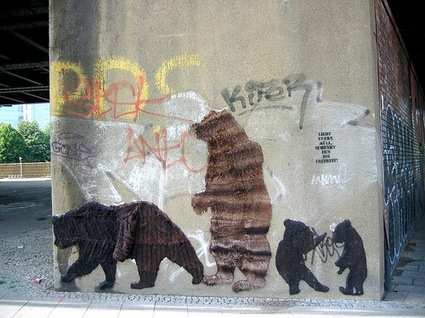 Neozoon, Berlin Bears (Schnute, Maxi, Piefke und Atze)
Neozoon, Berlin Bears (Schnute, Maxi, Piefke und Atze)
Views inside the book:
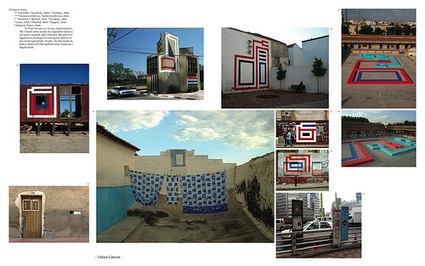
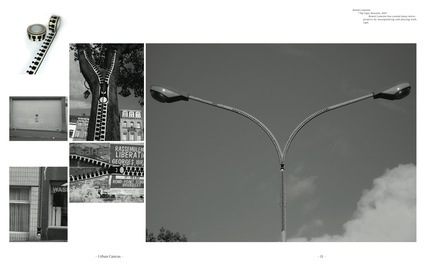
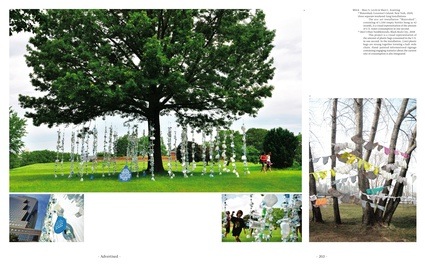
Related stories: Temporal : The Art of Stephan Doitschinoff, São Paulo: Survival, Alarm Dance, Interview with the Bijari group, REACTIVATE!! Part 2, Instant urbanism, Urban Interface berlin (part 1), Varini’s installation in Berlin, Wooster Collective’s talk at Conflux, etc.

